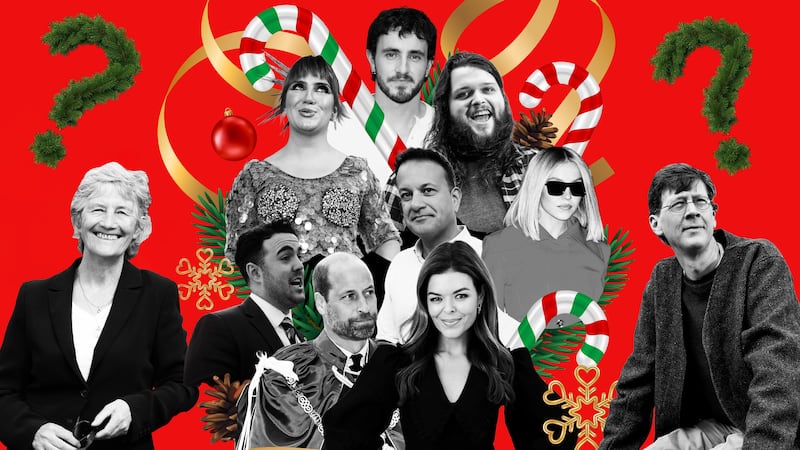Last week, I went again to a place that was in my eyeline for most of the first 20 years of my life, the Jewish cemetery on Aughavannagh Road in Crumlin, Dublin. It was what I saw when I looked out from my bedroom window or when I was daydreaming in class in both my primary and secondary schools: neat rows of white stones and green cedars.
Walking among the old graves, I was struck by the parallel between past and present. Many of the people whose names are on these stones were refugees from the violence unleashed by a vicious Russian regime.
In 1881, when Tsar Alexander II was assassinated, the Jews, as ever, were the scapegoats. Their rights were even further restricted. Young men were forcibly conscripted into the Tsarist armies, where they were essentially enslaved. They suffered pogroms in which they were murdered, raped and plundered with impunity.
So they did what millions of people facing the same threats are doing now. They fled.
READ MORE
Many of the ones who arrived in Dublin came from a shtetl called Akmiyan in the Kovno district of Lithuania, then part of the Russian empire.
The accounts of their travails are hauntingly similar to the stories that Sally Hayden tells so powerfully now of refugees trying to get to Europe: wading across rivers with children and bundles on their backs, walking hundreds or thousands of kilometres, paying off what would now be called traffickers, having to bribe officials to give them documents, evading border guards and criminal predators.
The Noyek brothers, Daniel and Abraham, created the wood products business that still thrives in Dublin today. But their descendant Davida Noyek recalled that on their long journey to Ireland “they met with experiences so unspeakable that they could never recount them even to their children. ‘It was terrible, you don’t want to know about it’ was to remain their only comment on the awful journey that lasted from 1894 until 1897.”
The question is asked now when children arrive alone to seek asylum: what kind of parents would send their kids off on treacherous voyages to faraway places? And the answer is as it always has been: very loving parents
Another well-known member of the Dublin Jewish community, Raphael Siev, recalled (according to Ray Rivlin’s excellent Jewish Ireland: A Social History) that for his grandmother “the journey was never completed. She died by the roadside giving birth to his father Albert.”
Many of these refugees arrived in Ireland destitute, speaking only Yiddish and Russian, and with little idea of where they were. They were looked down on even by the existing Jewish community in Dublin, where the word was that Akmiyan was “notorious as a nest of horse thieves and smugglers”.
And yet, by the time I was a kid in the 1960s, the children and grandchildren of these asylum seekers were the height of respectability. They came to our road on Sundays to visit the cemetery in nice (though unflashy) cars. They were elegantly dressed and well-spoken. We admired and slightly envied them as people who seemed both successful and decent.
Time
The difference between the good migrant and the bad migrant is simply time. From the point of view of native Catholic Dubliners, the Jews who fled Tsarist persecution many have constituted what Rivlin describes as an “influx of bearded, strangely garbed and impecunious foreigners”. But within a generation or two, they were adornments to the city’s civil, professional, cultural and commercial life.
And of course no one should know this better than the Irish. Look at all those jolly, exuberant, well-to-do supporters of Notre Dame thronging the city last weekend to cheer on “the fighting Irish” in the football game against the Navy at the Aviva Stadium.* Many of them too probably have ancestors who fled intolerable conditions in Ireland, made rough journeys to a place of greater safety and were initially greeted as half-savage interlopers.
Rivlin notes of the Jewish refugees of the 1890s that “often children not yet into their teens left alone, their parents preferring them to have personal safety and happiness abroad rather than certain danger and misery at home”.
The question is asked now when children arrive alone to seek asylum: what kind of parents would send their kids off on treacherous voyages to faraway places? And the answer is as it always has been: very loving parents.
Parents who make the most heartbreaking sacrifice, who weigh the dodgy chance of a safe and decent life elsewhere against the certainty of misery where they are and decide that the risk is worth taking. No one should have to make that calculation but hundreds of millions of people did and do.
Walking among those graves last week, I was reminded of how little is ever really new. It seems startling now that, because of the influx of refugees from the war in Ukraine, we are so close to the human consequences of Russian imperial savagery.
But we were just as close 125 years ago. All that really happened is that the strange people who came among us after terrible journeys ceased to be so strange. They became known, human, individual.
Their difference became not a threat but an enrichment. Their names, carved in stone in alphabets most of us cannot read, are nonetheless the names of people with our own fears and hopes, the same impulse to get away from the intolerable cruelty of murderous megalomaniacs.
*This article was amended on Wednesday, August 30th to reflect the fact that the game between Notre Dame and Navy took place in the Aviva Stadium rather than Croke Park















